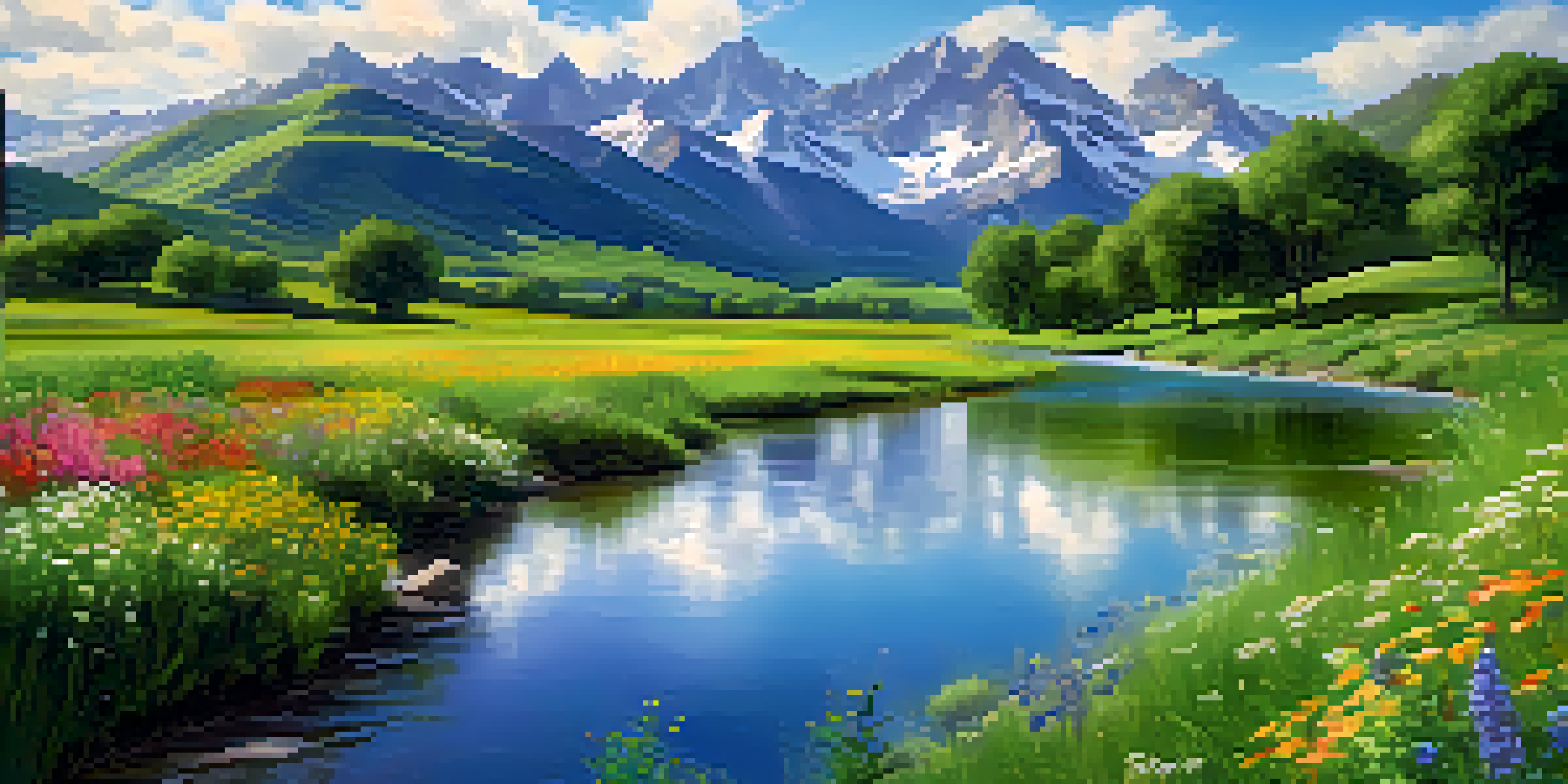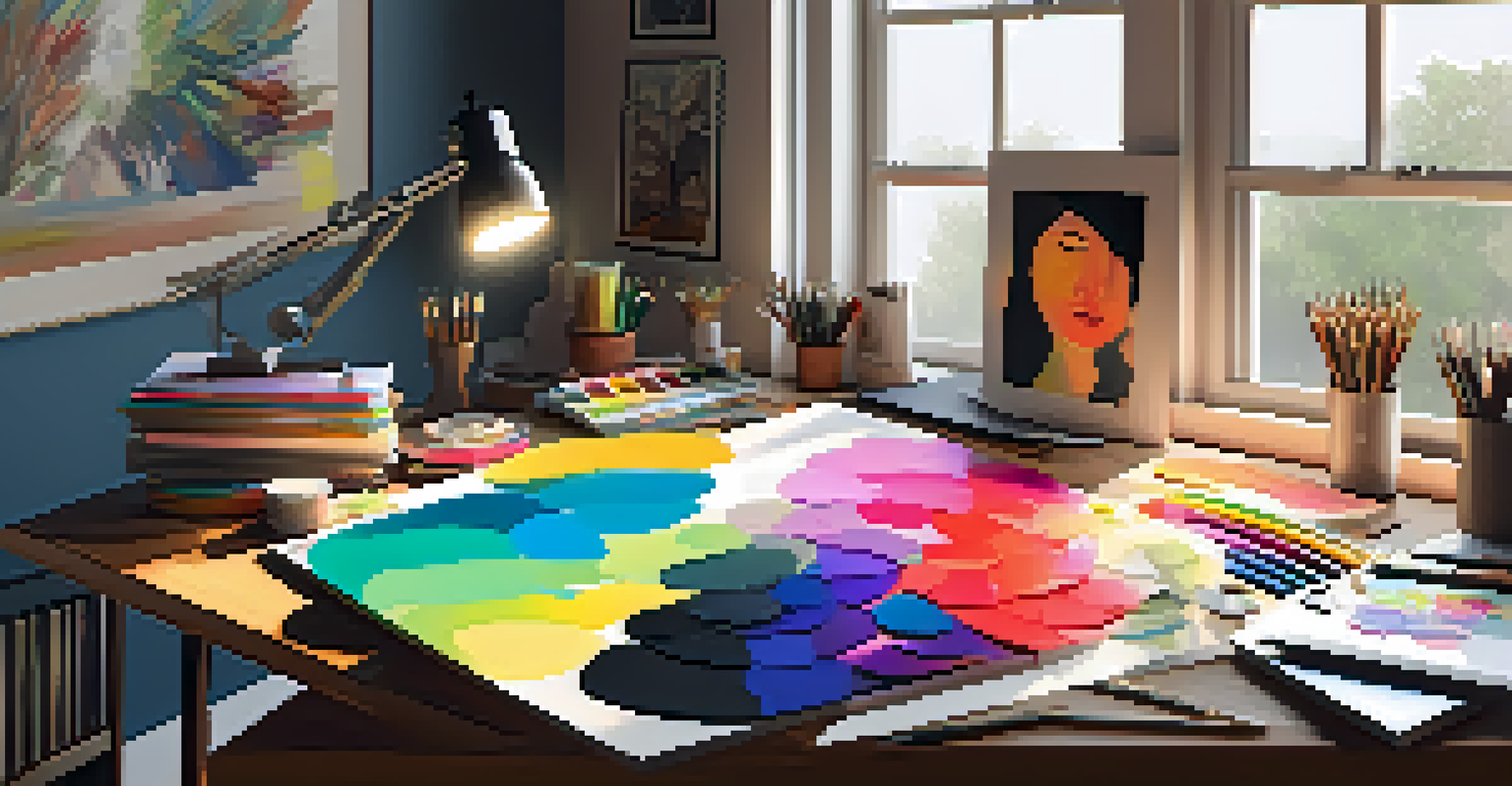Mastering Layering Techniques in Digital Art Software

Understanding Layers: The Foundation of Digital Art
Layers are like sheets of transparent paper stacked on top of one another, allowing artists to separate different elements of their artwork. This separation helps you edit and manipulate parts of your design without affecting the entire piece, which is a game changer for creativity. Imagine trying to paint a mural on a wall without first drawing guidelines; layers provide that structure and flexibility.
Art is not freedom from discipline, but disciplined freedom.
In digital art software, layers can be adjusted independently, enabling you to experiment without fear. For instance, if you’re working on a character design, you might have separate layers for the background, character sketch, colors, and details. This way, you can easily tweak colors or reposition elements without starting from scratch.
Ultimately, mastering layers is about understanding their potential to enhance your creative process. As you become more comfortable, you'll discover how layers can help you save time and elevate your artwork, making them an essential skill for any digital artist.
Types of Layers: Exploring Your Options
Digital art software typically offers various types of layers, including background, adjustment, and texture layers. Each type serves a unique purpose that can enhance your workflow. For example, a background layer is often used for static elements, whereas adjustment layers allow for non-destructive edits to colors and contrasts across multiple layers.

Understanding the difference between these layers can significantly improve your art-making process. For instance, if you want to change the hue of your entire artwork, using an adjustment layer allows you to do so without permanently altering the original layers. This flexibility lets you explore different looks until you find the perfect fit.
Mastering Layers for Creativity
Understanding and utilizing layers in digital art allows for greater flexibility and enhanced creative expression.
Additionally, texture layers can add depth and interest to your artwork. By overlaying textures, you can create more dynamic visuals that capture the viewer's attention. As you experiment with different types of layers, you'll find that each serves a unique purpose in your creative toolkit.
Layer Masks: A Beginner's Guide
Layer masks are powerful tools that allow you to hide or reveal parts of a layer without deleting anything. Think of a layer mask as a 'masking tape' that lets you selectively apply changes, giving you precision in your edits. This technique is especially useful when blending elements together seamlessly, such as merging a character with a complex background.
Every artist dips his brush in his own soul, and paints his own nature into his pictures.
To use a layer mask, you simply add it to your layer and paint on it using black or white. Painting with black hides parts of the layer while painting with white reveals them. This non-destructive approach ensures your original artwork remains intact, allowing for adjustments at any stage of your process.
As you practice using layer masks, you'll discover how they can enhance your creative possibilities. Whether you're creating complex compositions or subtle transitions, mastering layer masks will elevate the quality and professionalism of your digital art.
Blending Modes: Adding Depth to Your Artwork
Blending modes are like magical switches that change how layers interact with one another, affecting their colors and brightness. With options like 'Multiply' or 'Screen', you can create stunning effects that add depth and interest to your artwork. For example, using 'Multiply' can help darken an area, which is fantastic for creating shadows.
Experimenting with blending modes can lead to surprising and beautiful results. Imagine layering a vibrant texture over a soft color and switching the blending mode to 'Overlay'—suddenly, your artwork bursts with life! This exploration is where creative experimentation meets technical skill.
Adjustment Layers Enable Flexibility
Adjustment layers provide non-destructive editing options, allowing artists to experiment with colors and effects without compromising original artwork.
To get the most out of blending modes, it’s important to understand how they work. Each mode alters the pixels of the top layer in relation to the bottom layer, resulting in a new visual effect. As you become familiar with these modes, you'll find that they can dramatically enhance your artwork.
Grouping Layers: Organizing Your Workspace
As your artwork becomes more complex, organizing your layers is crucial for maintaining efficiency. Grouping layers allows you to categorize and manage related elements together, much like organizing a messy desk into labeled folders. This organization can save you time and frustration, especially when working on intricate compositions.
For example, if you're creating a landscape scene, you might group all the elements related to the sky, such as clouds and sunlight, into one folder. This way, you can easily toggle visibility or apply effects to the entire group rather than adjusting each layer individually. Such practices keep your workspace clean and focused.
In addition to grouping, consider naming your layers descriptively. A well-organized layer panel not only enhances your workflow but also makes it easier to collaborate with others or revisit your artwork later. Mastering the art of organization is just as important as mastering the artistic skills themselves.
Utilizing Adjustment Layers for Non-Destructive Edits
Adjustment layers are a fantastic feature in digital art software that allows you to make changes to your artwork without altering the original layers. Think of them as filters that you can apply to your entire work or specific groups of layers, giving you the freedom to experiment with colors and effects. This non-destructive approach is a lifesaver for artists looking to maintain flexibility in their creative process.
For instance, if you want to adjust the brightness of your entire artwork, you can add a brightness adjustment layer on top. You can tweak the settings without affecting the underlying layers, allowing you to play around until you achieve the desired look. This way, your original work remains intact, and you can easily revert to previous settings if needed.
Organize Layers for Efficiency
Grouping and naming layers helps maintain an organized workspace, making it easier to manage complex projects and collaborate with others.
As you become familiar with adjustment layers, you’ll find they can dramatically enhance your artwork. They encourage experimentation and creativity, enabling you to explore various styles and effects without the fear of making permanent changes.
Finalizing Your Artwork: Exporting with Layers
Once you've mastered layering techniques, it's time to finalize your artwork. Exporting with layers allows you to keep your project editable for future tweaks, which is incredibly useful for professional artists. Saving your file in a format that supports layers, like PSD, ensures you can return to your project for revisions or additional effects down the line.
When exporting for web or print, consider the format that best suits your needs. JPEGs, for example, flatten your artwork, making them suitable for final outputs but removing the ability to edit layers. On the other hand, formats like TIFF or PSD retain all your layers, giving you the flexibility you might need in the future.

Finalizing your artwork is not just about saving; it’s about choosing the right format to preserve your creative journey. By understanding the importance of exporting with layers, you'll ensure that your hard work remains adaptable and ready for any new ideas you might conjure up later.